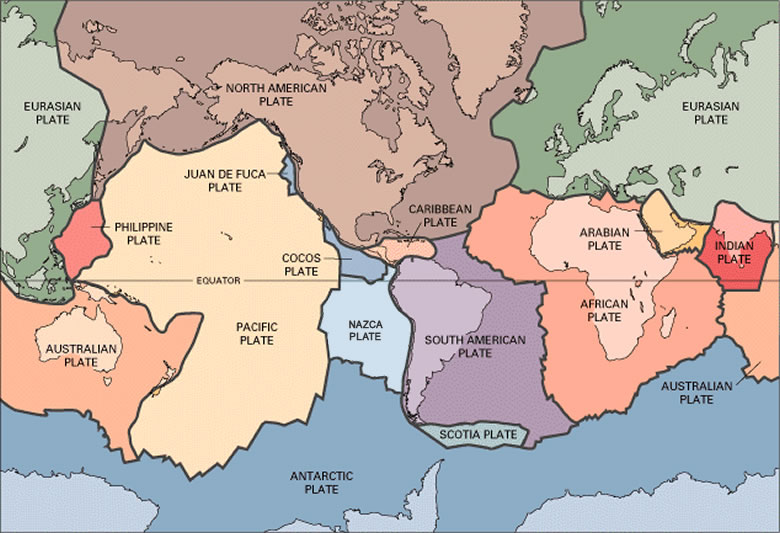What are plate tectonics?
 By Mayra Schliemann
By Mayra SchliemannThere are 7 major plates and a lot more but more little. They can move towards each other, crushing or separating.
A theory tries to explain the formation of continents as how we know nowadays based on the plates tectonics. This theory says that at first, all the continental plates were were together and formed a supercontinent called Pangea. Then, thank plate tectonic movements, it splitted into two and then into the continents we know nowadays. This process took millions of years and plates are still moving.
There are fourteen plates in total but the bigger ones are: the Pacific Plate, the North American Plate, the Eurasioan plate, the African Plate, the South American Plate and the Nazca Plate. This plates are constantly moving. They can separate(Constructive movement), they can crush(Collision) or move towards each other(Conservative movement). Also, it can happen that an oceanic plate and a continental plate crush and the oceanic one goes down the continental plate. When the oceanic crust is on the lithosphere down the continental crust, it melts into magma that then goes out by a volcanoe. This movement is call destructive movement and creates huge earthquakes and eruptions, volcanoes and islands.
Because of these movements ocean trenches and faults can appear. Ocean trenches are long depressions on the seafloor, for example the Marianas Trench.
 |
| Mount Vesuvius |

On the one hand volcanoes: leave minerals on the land, people use steam from hot ground to drive turbines and generate electricity, they give heating and they provide tourism. But, on the other hand it is very dangerous to live near them.
Earthquakes appear during any type of plate movement. Always, the aftershock is worst than the first earthquake. The things that happen during the earthquake are called primary effects. But if there are primary effects, secondary effects have to appear too! They are things that happen after the earthquake, like a fire, a tsunami, etc. Seismographs are made to measure them. When the earthquake is 4.5 you can feel it but it rarely causes damage. When it is 6.5 they cause much damage and destruction accompanied with great loss of life. They can be very destructive on areas up to 100 km. When it is 8.5 they can cause serious damage and can be very destructive over a wide area.
If you are planning to go on holidays take into account the boundaries and natural hazards to be prepared. As nobody can stop them, just be prepared.
Comentarios
Publicar un comentario